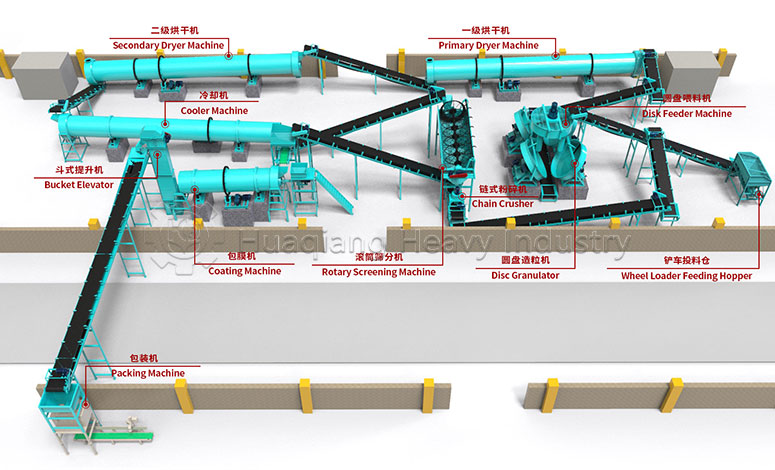A large amount of organic waste is generated daily in our cities and villages. This waste can be transformed into “black gold” to nourish the land through a sophisticated bio-organic fertilizer production line.
The starting point of this production line is the pretreatment of raw materials. Various types of livestock and poultry manure, straw, and kitchen waste are collected and first transported to the crushing and mixing stage via conveyor equipment.
Next comes the core fermentation stage. The processed materials are sent to a specialized fermentation workshop. Here, modern bio-organic fertilizer production technology replaces traditional composting methods. Using bio-organic fertilizer equipment such as trough-type compost turners or windrow compost turning machines, the materials are regularly turned, ventilated, and temperature-controlled.

The matured materials then enter the deep processing stage. Further crushing is required to ensure the fertilizer’s fineness. Subsequently, in the granulation section, a specialized granulator compresses the powdered material into granules, which facilitates transportation and application and reduces dust. Then, further processing is carried out.
Looking at the entire production line, we can see that the core of modern bio-organic fertilizer production technology lies in industrializing and standardizing the natural decomposition process through a series of efficient and controllable bio-organic fertilizer equipment.








